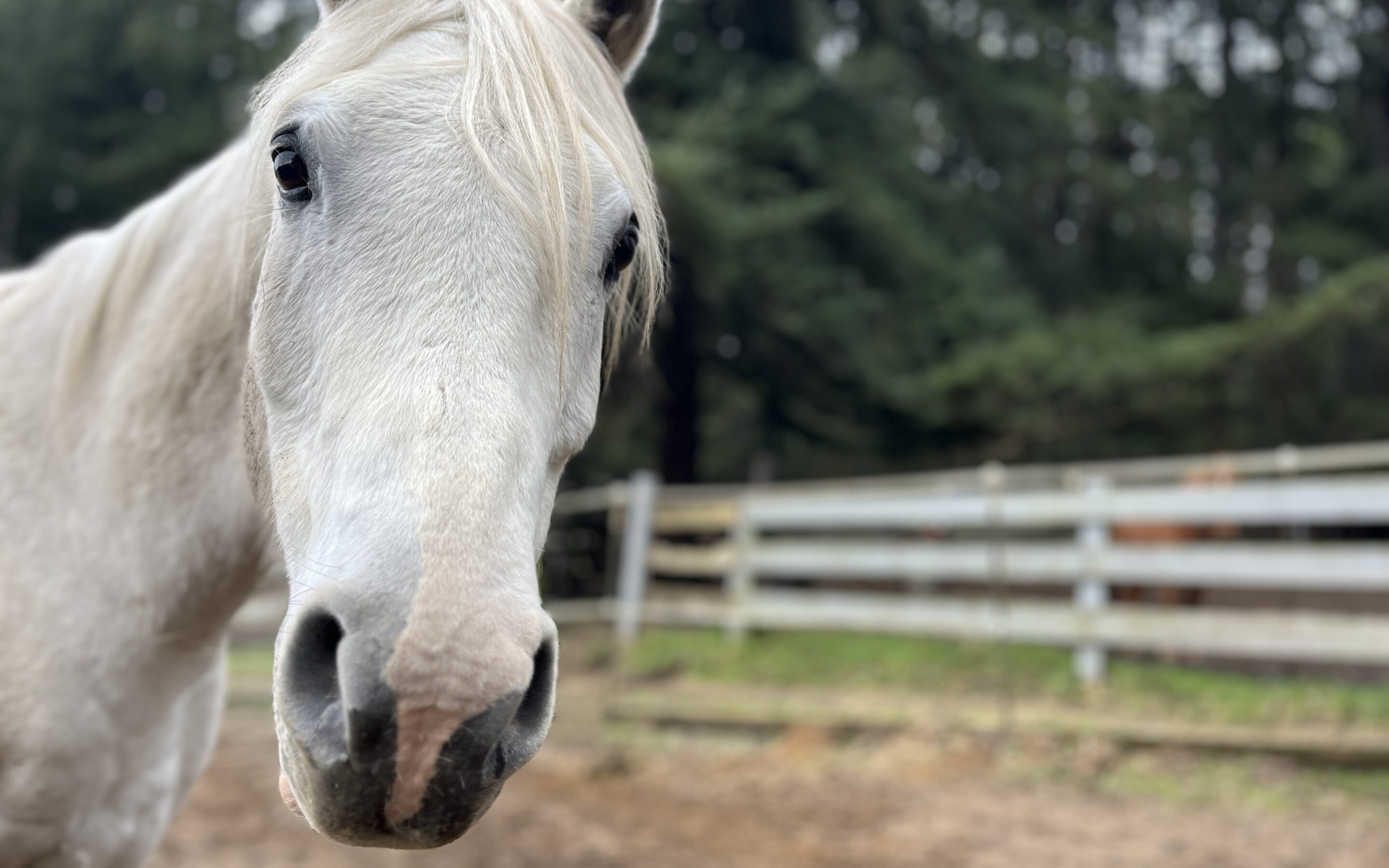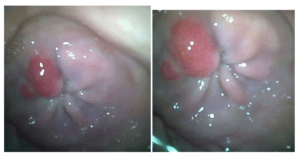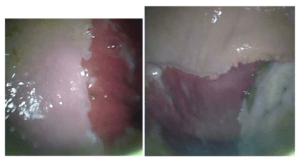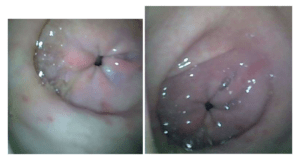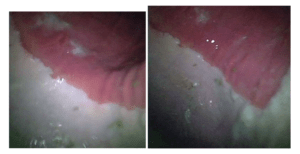Don’t ever let anyone tell you that unicorns don’t get bellyaches.
Scotty, our grey arab gelding, is short only the horn when it comes to resembling a mythical creature. His stately figure and long, flowing locks are something out of a story book. His personality, too, is somewhat fitting with what you might expect from a creature who has made a job out of leading people to feel it does not exist — somewhat aloof, a bit on the nervous side. But while these traits may be beneficial for unicorns, alas, in the real horse world, they are less desirable. Scotty’s tendency towards anxiety makes him a candidate for the villain of this story: ulcers.
We first noticed something was amiss when he went off his food. On a Sunday morning, our barn staff arrived to greet the day and the horses to find that Scotty still had hay in his net, left over from the night before. He turned up his nose at his morning mash, and once turned out with his breakfast hay, gave it a sniff before excusing himself from the table. Over the course of the day, he was somewhat interested in eating, taking bites here and there, but was not in possession of the vacuum cleaner mentality that most horses adopt around their food. And while it is true that some horses are less enthusiastic eaters than others, Scotty had not before been so disinterested. However, he was drinking water, and he was passing manure of regular consistency and with normal frequency. It did not initially seem so major as to suggest a colic or immediate emergency, and so we kept a close eye on Scotty with our thumb poised over speed dial to our vets.
A call from night check was the determining factor. Scotty was down in his stall — not thrashing, as we have seen in severe colic situations, but clearly not right. We removed his hay (despite his lack of interest, we didn’t want to grant him access in the event it was a colic) and got to work collecting vitals. One vet call and an hour after banamine later, Scotty was up and nosing about for hay scraps. We watched him on the cameras overnight, where he was quiet — no worsening of symptoms. The next morning, he was acting hungry, and had passed manure overnight, which the vet took as good signs. We could begin reintroducing food, beginning with about 1lb of hay, wet down to help increase his hydration. He seemed happy for the snack, and tucked right in, a good sign. In addition to this hay offering, our vet also had us give him sucralfate, in case there was an ulcer component. Foreshadowing!
Typically, in situations such as these, colics or cases where we need to monitor a horse for water intake and manure output and behavioral changes, we would isolate them from other horses. But Scotty, dear Scotty, is the anxious type, and without his friends around, would become even more so. Thus we made the decision to turn him out with his friends, setting up a chair to closely monitor him in turnout throughout the day. He got another small meal several hours after his first, but this one was less interesting to him. While he did initially tuck in, he lost interest after several minutes, and wandered away as he had been doing. He was also exhibiting some minor signs of distress, shifting his weight and stretching his neck, pawing intermittently. The kinds of things that are close to being blink-and-you-miss-it, if not already there. After sending this update to our vets, they had us give him a tube of gastroguard. His discomfort did seem to decrease, and while his appetite didn’t fully return, several hours later he was more interested in food then he’d been earlier in the day. This trend continued, and he did not become more painful or have his symptoms worsen. By morning, he was looking hungry, and tucked into the small amount of food that we offered. He also got another tube of gastroguard, and a date set for a scope to check for ulcers.
At that scope, it was revealed that yes, ulcers were plaguing our sweet Scotty. The main offenders were on his pylorus (glandular ulcers), which tend to be more difficult to treat and more likely to reoccur. We were to continue Scotty on a regime of twice daily sucralfate, as well as a tube of gastroguard once a day for four weeks, and rescope him at that time.
Following this treatment plan, Scotty returned to his normal self. His appetite came back, and he no longer showed signs of pain or discomfort around eating. He didn’t love so much the daily gastroguard, but some patient work surrounding handling his mouth showed vast improvement with his willingness to get a paste appetizer each morning.
The four weeks ticked along, as they are wont to do. At his rescope, there was some pretty significant improvement — though not total resolution — of the ulcers in his pyloric region. His ‘greater curvature,’ a region that includes the squamous mucosa, glandular mucosa, and margo plicatus, looked primarily healthy on both scopes, with one singular spot of ulceration possible on the latter.
- First Scope — Pylorus
- First Scope — Greater Curvature
- Second Scope — Pylorus
- Second Scope — Greater Curvature
After the findings of the second scope, our vets decided to switch up the medication route. Scotty would be given a tab of Misoprostol once every 8 hours. Thanks to a handy-dandy automatic feeder, his middle of the night pill could be administered without a human having to set an alarm. He has been a very good boy about taking this pill out of a horsey pill pocket (hollowed out carrot). We have also introduced Purina Outlast to his diet, and good ole sucralfate remains a twice daily staple.
Scotty will continue to be in work going forward, though we will take it slow. It would be counterproductive to stop work entirely until the ulcers fully resolve, as the reintroduction might cause a flare up. Instead, we are keeping things on the easier side for him as we actively treat.
Scotty’s next scope is in a few weeks time, and we will hopefully see a very happy GI system at that point. In the meantime, we are thankful for the wonder of modern medicine and the guidance of our vets to help us help our sweet, sensitive unicorn boy!

